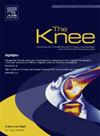Physeal-sparing ACL reconstruction has equivalent survivorship and functional outcomes as transphyseal reconstruction but does not prevent growth disturbance: a systematic review of clinical and radiological outcomes
IF 2
4区 医学
Q3 ORTHOPEDICS
引用次数: 0
Abstract
Background
ACL reconstruction in the paediatric population presents unique challenges, owing to the ongoing skeletal growth. This systematic review aimed to compare the functional and radiological outcomes of transphyseal(TP), partial transphyseal(pTP) and physeal-sparing(PS) techniques.
Methods
A systematic search of the MEDLINE and EMBASE databases was performed in accordance with the PRISMA guidelines to identify studies reporting growth disturbances and/or functional outcomes. Pooled incidence of growth disturbance and graft rupture was calculated from available raw data using an inverse-variance random-effects model.
Results
The search identified 37 studies reporting on TP (n = 1389), 11 on PS (n = 867), 5 on pTP (n = 91), and 6 comparing both techniques [TP (n = 1668), pTP (n = 8), PS (n = 445)], with mean follow up ranging from 1.25 to 8 years. Mean age in TP studies ranged between 12–16.4, pTP; 10.7–13.6, and PS; 10.5–14.3 years. Pooled proportional incidence of leg length discrepancy was 1.3% in TP, 5.7% in pTP and 3.4% in the PS studies. Incidence of angular deformities was 1.5% in TP, 2.8% in pTP and 1.8% in the PS studies. Graft rupture rate was 6% in the TP studies, 9.8% in pTP, and 8.1% in the PS studies. Five comparative studies reported no differences in rates of graft rupture or growth disturbance.
Conclusion
TP, pTP and PS ACL reconstruction techniques result in similar patient reported outcomes and graft rupture rates. Patients who undergo pTP and PS reconstruction are generally younger, thus more susceptible to growth-related complications post-surgery. Larger comparative studies with age-matched cohorts are required to investigate this association further.
保留肢体的前交叉韧带重建与经骨骺重建具有相同的生存和功能结果,但不能防止生长障碍:临床和放射学结果的系统回顾
背景:由于持续的骨骼生长,acl重建在儿科人群中提出了独特的挑战。本系统综述旨在比较经骨骺(TP)、部分经骨骺(pTP)和保留骨骺(PS)技术的功能和放射学结果。方法根据PRISMA指南对MEDLINE和EMBASE数据库进行系统检索,以确定报告生长干扰和/或功能结果的研究。生长障碍和接枝破裂的合并发生率使用反方差随机效应模型从可用的原始数据中计算。结果检索到37篇报道TP的研究(n = 1389), 11篇报道PS的研究(n = 867), 5篇报道pTP的研究(n = 91), 6篇比较两种技术[TP (n = 1668), pTP (n = 8), PS (n = 445)],平均随访时间从1.25年到8年不等。TP研究的平均年龄在12-16.4岁之间;10.7-13.6, PS;10.5 - -14.3年。腿长差异的合并比例发生率在TP组为1.3%,在pTP组为5.7%,在PS组为3.4%。角度畸形的发生率在TP组为1.5%,在pTP组为2.8%,在PS组为1.8%。移植物破裂率在TP研究中为6%,在pTP研究中为9.8%,在PS研究中为8.1%。五项比较研究报告移植物破裂或生长障碍的发生率没有差异。结论tp、pTP和PS ACL重建技术的患者报告结果和移植物破裂率相似。接受pTP和PS重建的患者通常较年轻,因此更容易发生术后生长相关并发症。需要对年龄匹配的人群进行更大规模的比较研究来进一步调查这种关联。
本文章由计算机程序翻译,如有差异,请以英文原文为准。
求助全文
约1分钟内获得全文
求助全文
来源期刊

Knee
医学-外科
CiteScore
3.80
自引率
5.30%
发文量
171
审稿时长
6 months
期刊介绍:
The Knee is an international journal publishing studies on the clinical treatment and fundamental biomechanical characteristics of this joint. The aim of the journal is to provide a vehicle relevant to surgeons, biomedical engineers, imaging specialists, materials scientists, rehabilitation personnel and all those with an interest in the knee.
The topics covered include, but are not limited to:
• Anatomy, physiology, morphology and biochemistry;
• Biomechanical studies;
• Advances in the development of prosthetic, orthotic and augmentation devices;
• Imaging and diagnostic techniques;
• Pathology;
• Trauma;
• Surgery;
• Rehabilitation.
 求助内容:
求助内容: 应助结果提醒方式:
应助结果提醒方式:


